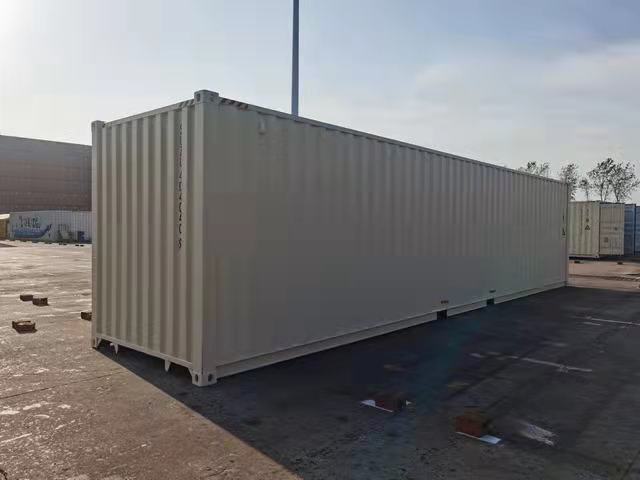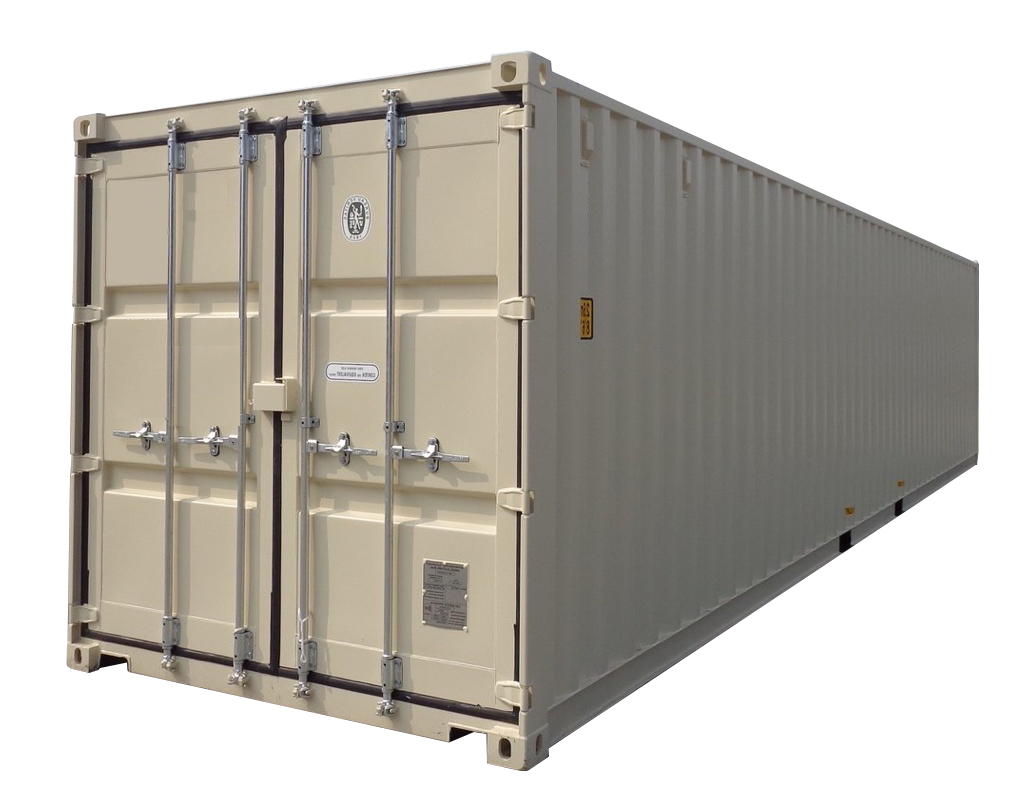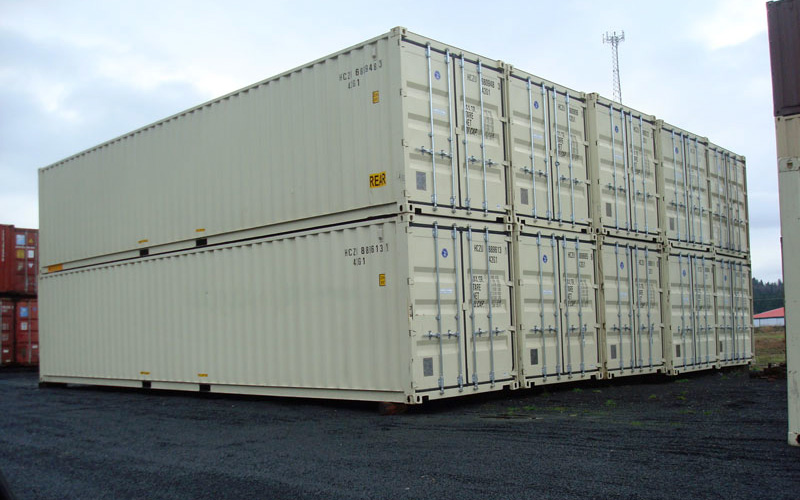The Ultimate Overview to Picking the Right Delivery Container for Your Needs
When it comes to picking the right delivery container, comprehending your particular requirements is necessary. You'll wish to take right into account elements like size, type, and material to ensure you make the very best selection. From standard sizes to specialized options, there's a great deal to check out. Plus, budgeting for both the container and any kind of modifications can make a big difference. Let's break down the key elements to aid you find the best suitable for your demands.
Comprehending Shipping Container Sizes
When you're picking a delivery container, comprehending the various dimensions available is essential for making the ideal decision. Shipping containers typically come in basic sizes of 20 and 40 feet, however you'll also find other dimensions. Knowing the dimension you require depends on what you prepare to shop or transport.If you're moving smaller products, a 20-foot container may be perfect, while larger deliveries frequently call for a 40-foot container. Bear in mind that the height can also differ; high cube containers supply extra vertical room, which can be helpful for taller goods - Rent New Shipping Container 40' x 8' x 9’6".Before making a decision, measure your cargo, and take into consideration exactly how much room you'll require for packing and unloading. Constantly factor in potential future requirements-- selecting a slightly larger container may conserve you problem down the line. Inevitably, choosing the right size will improve effectiveness and assure your products are protected during transportation
Sorts Of Delivery Containers Available
There are a number of kinds of delivery containers readily available, each created for particular purposes and freight demands. The conventional completely dry container is versatile, ideal for basic freight. If you're shipping perishable products, take into consideration a chilled container, which maintains a controlled temperature. For extra-large products, high cube containers provide extra elevation, accommodating taller loads.If you require to transport heavy equipment or devices, level rack containers give a durable base without walls. On the other hand, open-top containers enable very easy loading of high freight, with a removable tarp covering for protection. If you're looking for flexibility, think about a collapsible container that can be conveniently stored when not in use.Lastly, specialized containers like tank containers are made use of for fluids, while vented containers are made for bulk cargo that requires air flow. Knowing your cargo type will assist you pick the best container to fulfill your delivery needs successfully.
Material Factors To Consider for Longevity
When selecting a delivery container, the product plays an important duty in its resilience. You'll intend to evaluate the benefits of steel versus aluminum, specifically relating to deterioration resistance. Recognizing these factors can help you make an extra informed option for your shipping needs.
Steel vs. Light weight aluminum Containers
Just how do you select in between steel and light weight aluminum containers for your delivery requires? Beginning by thinking about resilience. Steel containers are robust and deal superb toughness, making them perfect for heavy tons and harsh conditions. They withstand damage from impacts and are often less costly, which can be a major variable for budget-conscious buyers.On the various other hand, light weight aluminum containers are light-weight, which can conserve you on shipping costs. They're easier to maneuver and are a great selection if you need to carry products regularly. Aluminum is usually much more pricey and less robust than steel. Weigh your particular requirements carefully, consisting of weight, price, and the kind of cargo you'll be shipping, to make the right option for your situation.
Rust Resistance Variables
Selecting the best product doesn't simply involve weight and expense; corrosion resistance plays a substantial duty in sturdiness. When choosing a delivery container, think about the setting it'll encounter. Steel containers, while solid, can rust if not appropriately dealt with. Search for alternatives with protective layers or galvanization to improve their life-span. Light weight aluminum, on the various other hand, supplies all-natural deterioration resistance, making it ideal for seaside areas or moist conditions. It browse this site can be a lot more pricey. Additionally, evaluate the container's use-- if it'll be subjected to chemicals or harsh weather, focus on materials that can hold up against these problems. Purchasing a corrosion-resistant container now can conserve you from expensive fixings or replacements down the line. Select intelligently for lasting benefits.
Adjustments and Modification Options
Delivering containers aren't just for carrying products; they can be transformed to meet your particular needs through different alterations and customization alternatives. You can convert a standard container right into a comfy workplace, a short-term retail shop, or also an individual gym. The possibilities are almost endless.Think concerning adding windows, insulation, or ventilation to enhance convenience. You may likewise take into consideration electric wiring, pipes, or also custom-made shelving to improve performance. If safety and security's an issue, reinforced locks can give tranquility of mind.For aesthetic charm, you can paint the container or include a special design to make it stand out. Do not fail to remember about floor covering choices-- whether you desire resilient plywood or something much more sophisticated, it can raise the space.Ultimately, tailoring your shipping container to fit your requirements can boost usability and develop a distinct setting that shows your style.
Analyzing Your Transportation Requirements
When it comes to utilizing your changed shipping container, recognizing your transportation requires is vital. Begin by determining what you'll be shipping-- whether it's hefty equipment, retail products, or individual items. Each sort of cargo has various needs concerning dimension, weight, and accessibility.Next, consider the distance and setting of transportation. Are you shipping locally, country wide, or internationally? This impacts the container's layout and functionality. If you're using trucks, assure your container fits conventional measurements for easy loading and unloading.Additionally, think of transportation problems. Will your things require special security from climate or temperature fluctuations? If so, you might need insulation or ventilation functions in your container.Lastly, analyze how often you'll be carrying products. Constant deliveries might call for a more resilient and flexible container to satisfy continuous needs. By attending to these variables, you'll be well-prepared to pick the right shipping container for your needs.
Budgeting for Your Delivery Container
Setting an allocate your shipping container is necessary for making browse around this web-site sure a smooth investing in process. Determine just how much you can pay for to invest. Prices can differ substantially based on dimension, condition, and type. New containers generally set you back more, yet made use of ones can use considerable savings.Next, consider any added expenses you might sustain, such as transportation costs, distribution fees, and modifications. If you plan to tailor the container, consider those expenses also. Research study different vendors to compare rates and discover the finest deal that fulfills your needs.Don' t fail to remember to consist of any type of permits or laws that may relate to your purchase and use of the container. By plainly describing your spending plan, you'll be better prepared to make informed choices, guaranteeing you obtain the ideal container without breaking the financial institution.
Maintenance and Treatment for Durability
To guarantee your delivery container lasts for years, regular upkeep is vital. Begin by evaluating the exterior for corrosion, damages, and damage. If you detect any problems, resolve them quickly to stop further damage. Clean the container regularly, both in and out, to remove dirt, particles, and dampness that can result in corrosion.Ensure the doors secure effectively and lubricate the joints to stay clear of rust and sticking. If you're making use of the container for storage, take into consideration adding air flow to decrease moisture and mold and mildew growth. For extra defense, apply a rust-inhibiting paint or sealant annually.If your container's located in a rough environment, like coastal areas, you might need to boost upkeep regularity. Watch on the flooring, as well; any type of indicators of wear should be repaired right away. With these basic actions, you'll expand the life of your shipping container significantly.
Regularly Asked Questions
Exactly how Do I Discover a Reliable Shipping Container Supplier?
To find a trustworthy shipping container distributor, start by researching online reviews, requesting for referrals from close friends or sector calls, and contrasting rates. Always examine their qualifications and warranty they supply quality containers that fulfill your demands.

Can I Lease a Delivery Container Rather Than Acquiring?
Yes, you can certainly rent a delivery container rather than getting one. Lots of vendors provide rental choices, which can save you money and provide adaptability if you just require it for a brief period.
What Permits Are Required for Container Placement?

Are Shipping Containers Weatherproof and Appropriate for Outdoor Storage Space?
Yes, delivering containers are normally weatherproof, made to hold up against harsh conditions. Their robust building and construction maintains your products safe and dry, making them appropriate for exterior storage space. Just ensure appropriate ventilation to avoid dampness accumulation inside.
Exactly how Do I Carry a Shipping Container Once Purchased?
